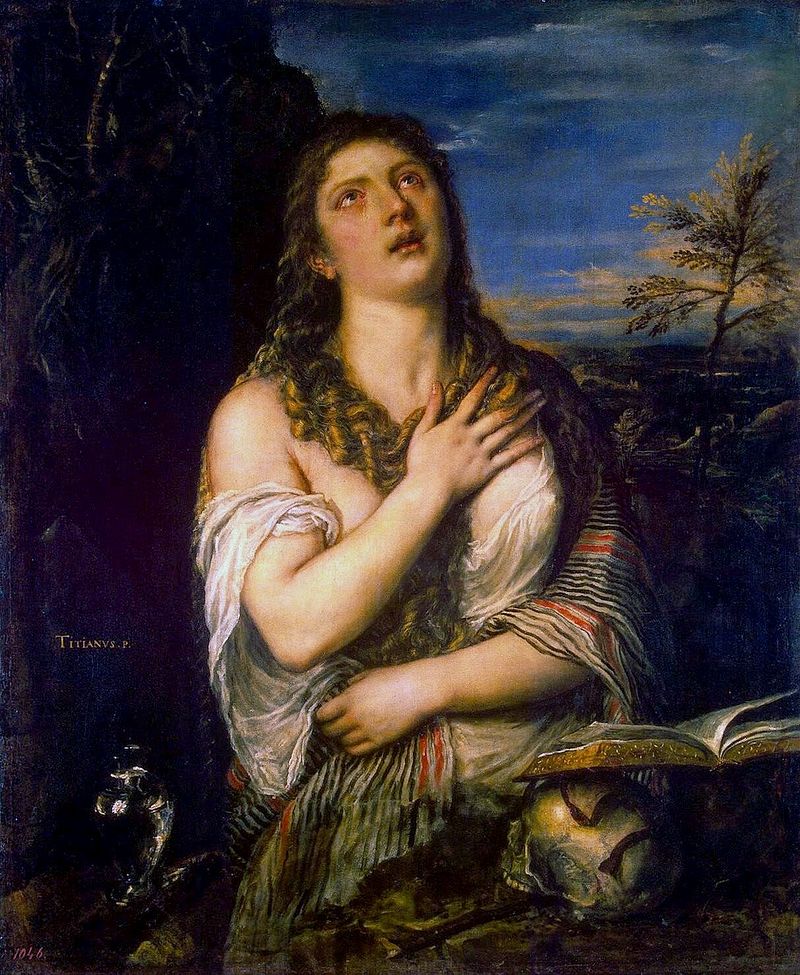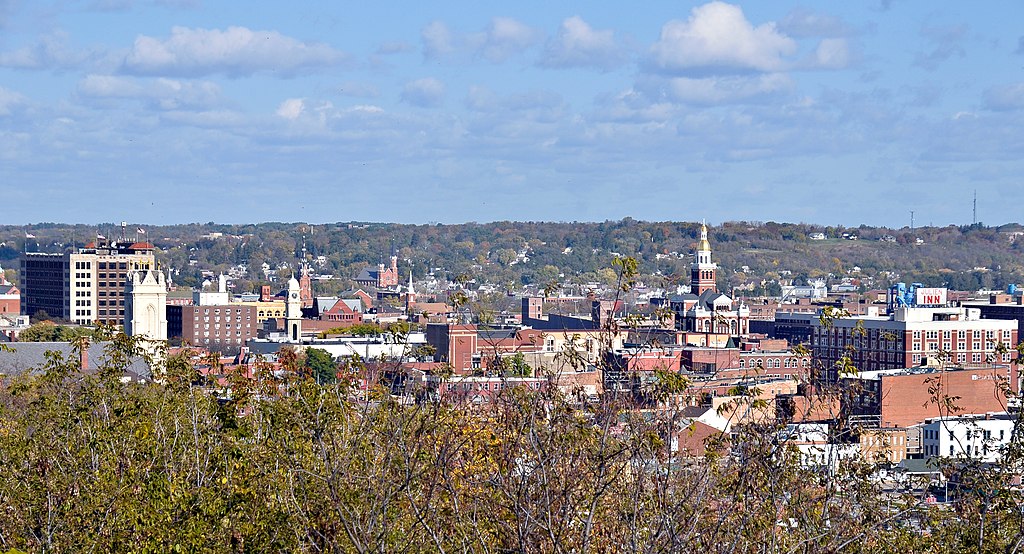
* * * *
July 28, 2022 – Last Friday, July 22, was the Feast Day for “Mary from Magdala.” I covered that feast day last year in “Saint” Mary Magdalene – 2021, and the year before in Mary Magdalene, 2020 – and Week 19 of “the Covid.” And just for the record, we are now in Week 124* of the Covid pandemic, with no end in sight. (Plus we now have Monkeypox to worry about.)
Three days after Mary’s feast, Monday, July 25, we remember James, son of Zebedee. He’s one of several New Testament “Jameses,” but he’s also “St. James the Greater.” And this James is the Patron Saint of Pilgrims. As such, he’ll be my patron saint this September when I start an 18-day, 154-mile hike on the Way of St Francis, from Assisi back to Rome.
And speaking of pilgrimages, that post from two years ago, “2020 … Week 19,” talked about an earlier one. That was a four-day canoe pilgrimage on the Missouri River, 115 river miles, from South Sioux City to Omaha Nebraska. That was one of a series of journeys-of-discovery leading to this September’s Way of St Francis. But getting back to Mary Magdalene…
St. Augustine called her the “Apostle to the Apostles.” See also Mary … FutureChurch:
Mary of Magdala is perhaps the most maligned and misunderstood figure in early Christianity… Since the fourth century, she has been portrayed as a prostitute and public sinner… Paintings, some little more than pious pornography, reinforce the mistaken belief that sexuality, especially female sexuality, is shameful, sinful, and worthy of repentance. Yet the actual biblical account of Mary of Magdala paints a far different portrait than that of the bare-breasted reformed harlot of Renaissance art. [Emphasis added.]
2015’s Mary Magdalene, “Apostle to the Apostles” noted that this particular Mary – a common name at the time – has long had a rotten reputation. “In Western Christianity, she’s known as ‘repentant prostitute or loose woman,” but the consensus now is that these claims are unfounded. For one thing, Isaac Asimov said this Mary would be more accurately considered “a cured madwoman rather than a reformed prostitute.” (A subtle distinction.)
Yet – notwithstanding that “sordid past” – it’s clear that Mary Magdalene showed far more courage than the original 11 disciples. (Not counting Judas.) See John 20:1: “Early on the first day of the week, while it was still dark, Mary Magdalene went to the tomb and saw that the stone had been removed from the entrance.” Thus the one indisputable fact is that Mary was both the first person to see the empty tomb of Jesus, and one of the first – if not the first – to see the risen Jesus. And that may have accounted for the stories about her “sordid past;” jealous males trying to sully her reputation and cover up their own cowardice.
So her story could be one long pilgrimage to eventually see the risen Jesus. By and through that journey she was able to escape her sordid past and move on to become something greater, the “Apostle to the Apostles.” (A good life-lesson to be sure.) And speaking of pilgrimages, July 25 is the feast day for the Patron Saint of Pilgrims, James, son of Zebedee.
Going back to 2014, On “St. James the Greater” spoke of this James being not only the patron saint of pilgrims. He’s also the patron saint of Spain and Portugal. Which is why the Camino de Santiago* traditionally ends in Santiago de Compostela in northwest Spain.
Tradition says that James traveled to Spain to spread the Gospel there:
[T]he Virgin Mary appeared to James on the bank of the Ebro River at Caesaraugusta, while he was preaching the Gospel in Iberia. She appeared upon a pillar, Nuestra Señora del Pilar, and that pillar is conserved and venerated within the present Basilica of Our Lady of the Pillar, in Zaragoza, Spain. Following that apparition, St. James returned to Judea, where he was beheaded by King Herod Agrippa I in the year 44.
All of which is well and good, but raises the question: “Why do such a pilgrimage at all?” One answer comes from the book Passages of the Soul: Ritual Today, by James Roose-Evans. The book noted that a healthy sense of ritual “should pervade a healthy society,” but that a big problem in today’s world is that we’ve abandoned many of the rituals that used to help us deal with big change and major trauma. The book added that all true ritual “calls for discipline, patience, perseverance, leading to the discovery of the self within.”
More to the point, the book said a pilgrimage – like an 18-day, 154-mile hike on the Way of St Francis – “may be described as a ritual on the move.” And that such a moving ritual often includes the “raw experience of hunger, cold, lack of sleep.” But through such an experience we can get a sense of our fragility as mere human beings. (Compared with “the majesty and permanence of God” and His creation.) Finally, the book noted that such a pilgrimage can be “one of the most chastening, but also one of the most liberating” of personal experiences.
So, a month from today (August 27) I’ll be flying to Rome, to get “chastened and liberated…”
* * * *

* * * *
The upper image is courtesy of St. James Patron Saint Of Pilgrims – Image Results, and the Catholic Diocese of Calgary. That’s the “Latin Church ecclesiastical territory or diocese of the Catholic Church in Alberta, Canada… Its cathedral episcopal see is St. Mary’s Cathedral, Calgary, Alberta. It is currently led by Bishop William McGrattan.” See also Saint James, Patron of Pilgrims (Catholic Education Resource Center).
Week 124 of COVID. (Or 31 months.) That’s according to my calculations, originally set out in St. Philip and St. James – May, 2020. There I explained that, to me, “the pandemic hit full swing – the ‘stuff really hit the fan’ – back on Thursday, March 12,” when the ACC basketball tournament got cancelled, along with other major sports. “So my definition of the ‘First Full Week of the Covid-19 Pandemic’ has it starting on Sunday, March 15 and ending on Saturday the 21st.”
Re: The Way of St. Francis. My brother, his wife and I will fly into Rome at different times, meet up in Assisi, and from there hike “back” to Rome. The 18 days will include three days off, of not hiking, in Spoleto, Rieti, and Montelibretti. The latter is some 32 miles from Vatican City and the end of the hike. For another take on the hike see The Way of St. Francis: Walking 550 Kilometers Along One of the World’s Greatest Pilgrimages.
Re: James’ vision in Spain. Tradition says it happened on January 2, 40 A.D..
Re: Santiago de Compostela. “Iago” is another translation of “James.” As Wikipedia put it, “Santiago is the local Galician evolution of Vulgar Latin Sanctus Iacobus ‘Saint James.””
Re: “Passages of the Soul.” The quotes are from the 1994 Element Books Ltd. edition, at pages 23-25.
The lower image is courtesy of wikipedia.org/wiki/Penitent_Magdalene_(Titian,_1565):
The Penitent Magdalene is a 1565 oil painting by Titian of saint Mary Magdalene, now in the Hermitage Museum in Saint Petersburg. Unlike his 1533 version of the same subject, Titian has covered Mary’s nudity and introduced a vase, an open book and a skull as a memento mori. Its coloring is more mature than the earlier work, using colors harmoni[z]ing with character. In the background the sky is bathed in the rays of the setting sun, with a dark rock contrasting with the brightly lit figure of Mary.
Also, Titian did a “racier” version in 1533. See Penitent Magdalene (Titian, 1533) – Wikipedia. For more on this Mary see also MARY MAGDALENE, Bible Woman: first witness to Resurrection, and What Did Mary Magdalene look like?
* * * *

